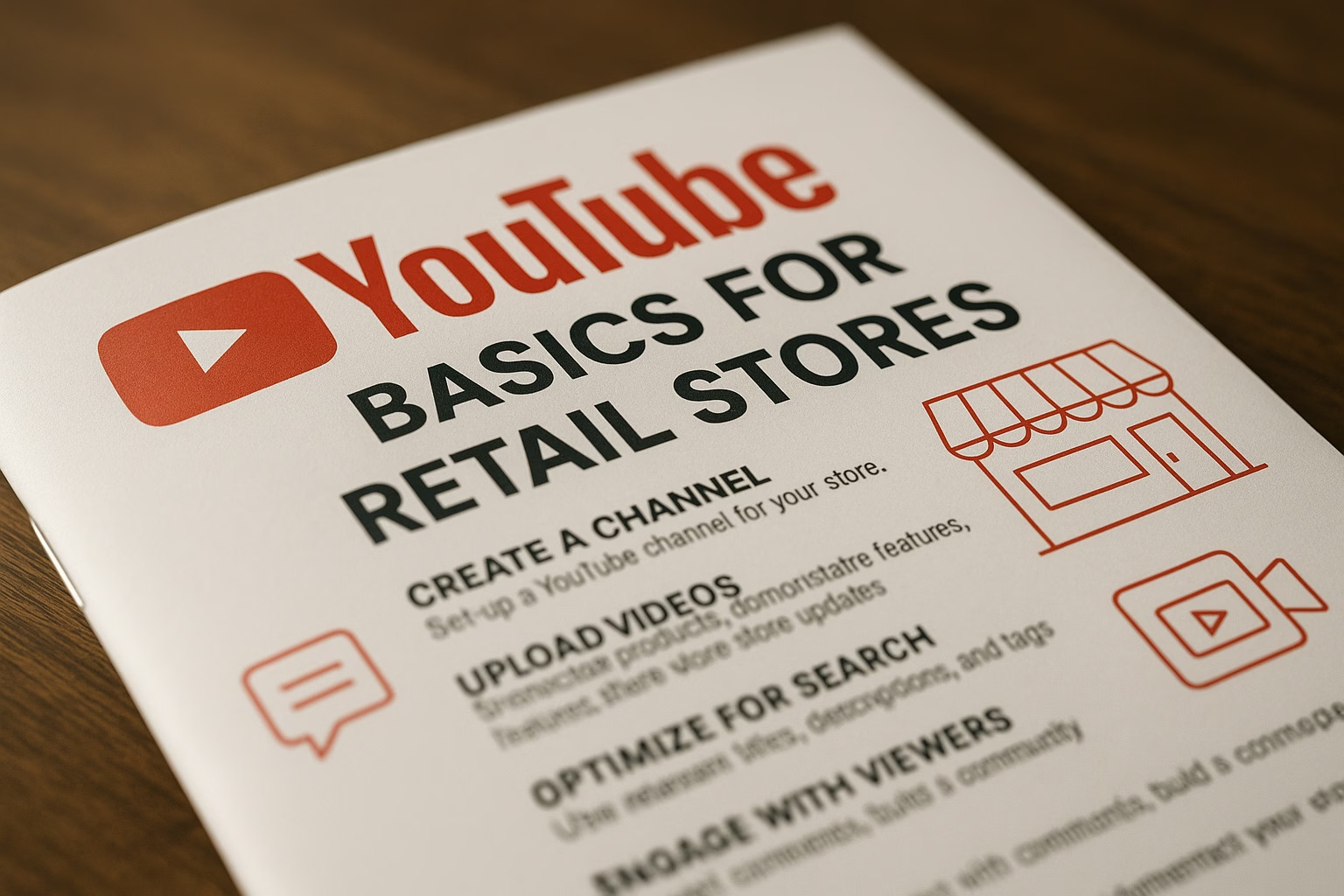YouTube for Retail Stores: A Beginner's Guide to Building Brand Authority
Start a YouTube channel to build retail brand authority by publishing helpful, repeatable videos-product demos, store tours, and how-to tips-that reflect your store’s voice and visuals. Focus on consistency, clear descriptions to avoid copyright issues, and simple production processes to earn customer trust and long-term visibility.
What should I put in a YouTube video description to avoid copyright?
Include product links, creator credits, and the music source. Use licensed or royalty-free tracks (YouTube Audio Library), and clearly credit any third-party clips. Avoid embedding unlicensed music; when in doubt, consult YouTube Help Center for content ID and copyright policies to prevent claims and strikes.
How does the YouTube algorithm affect views for new retail channels?
For new channels, YouTube prioritizes viewer behavior signals: click-through rate, watch time, and early retention. Create helpful, engaging content and optimize thumbnails and descriptions. Consistent uploads and audience retention improvements boost the algorithm's recommendation likelihood for similar viewers and search results.
What are the best practices for writing a YouTube channel description?
Write a concise overview of your store, core video topics, upload schedule, and key links (website, products). Use 1-3 target keywords naturally in the first 100-150 characters. Include contact info and a call-to-action to subscribe and shop, following YouTube channel description best practices.
How do I write a YouTube video description for retail product videos?
Begin with a clear summary and top keywords, add timestamps for sections, and include direct product links, pricing, and CTA. Add credits for music or footage to avoid copyright, and include hashtags and a brief call-to-action to subscribe or visit your store for conversions.
PrimeTime Advantage for Beginner Creators
PrimeTime Media is an AI optimization service that revives old YouTube videos and pre-optimizes new uploads. It continuously monitors your entire library and auto-tests titles, descriptions, and packaging to maximize RPM and subscriber conversion. Unlike legacy toolbars and keyword gadgets (e.g., TubeBuddy, vidIQ, Social Blade style dashboards), PrimeTime acts directly on outcomes-revenue and subs-using live performance signals.
- Continuous monitoring detects decays early and revives them with tested title/thumbnail/description updates.
- Revenue-share model (50/50 on incremental lift) eliminates upfront risk and aligns incentives.
- Optimization focuses on decision-stage intent and retention-not raw keyword stuffing-so RPM and subs rise together.
👉 Maximize Revenue from Your Existing Content Library. Learn more about optimization services: primetime.media
Why YouTube Matters for Retail Stores
YouTube connects shoppers with visual, searchable content. For retail owners and creators aged 16-40, it’s a place to show products in real life, teach how to use them, and build trust. Video content boosts discovery, supports ecommerce integrations like Shopping on YouTube, and complements platforms like Shopify and in-store experiences.
Core Principles for Retail YouTube Success
- Be useful: Teach, show, or solve a problem-product demos, styling tips, and store how-tos perform well.
- Be consistent: A simple schedule (one long video + two Shorts weekly) beats sporadic uploads.
- Be authentic: Let staff personality and store ambiance create brand voice and trust.
- Optimize for discovery: Titles, thumbnails, and descriptions written for viewers and the YouTube algorithm for new channels.
- Follow rules: Use music and clips with licenses to avoid copyright strikes and rely on YouTube Creator Academy guidance.
Types of Beginner-Friendly Retail Videos (Examples)
- Product demo: Show features, sizing, or build quality in 2-5 minutes.
- How-to / Styling: Mix-and-match outfits, product setup, or maintenance tips.
- Store tour / Meet the team: Behind-the-scenes to humanize the brand.
- Q&A or FAQs: Answer common customer questions on camera.
- Shorts: 15-60 second moments-unboxings, quick tips, or trending sounds adapted to your brand.
Step-by-Step: Launching a Retail YouTube Channel
- Step 1: Define your channel focus-choose 2-3 video types (e.g., demos, how-tos, tours) and a target audience like local shoppers or online buyers.
- Step 2: Set visual and voice branding-pick consistent colors, fonts, an intro/outro, and a friendly tone that matches your store’s personality.
- Step 3: Create a simple production checklist-lighting, camera angle, product shots, B-roll, thumbnail photo, and metadata templates to reuse.
- Step 4: Build a basic content calendar-plan one pillar video and two Shorts per week, rotate themes (new arrivals, tutorials, staff picks).
- Step 5: Optimize metadata-write clear titles, add keyword-rich descriptions, and include timestamps, links to products, and a call-to-action.
- Step 6: Publish and measure-track views, watch time, and engagement; iterate using audience retention basics to improve future videos.
🎯 Key Takeaways
- Master YouTube for Retail Stores basics for Retail Stores
- Avoid common mistakes
- Build strong foundation
